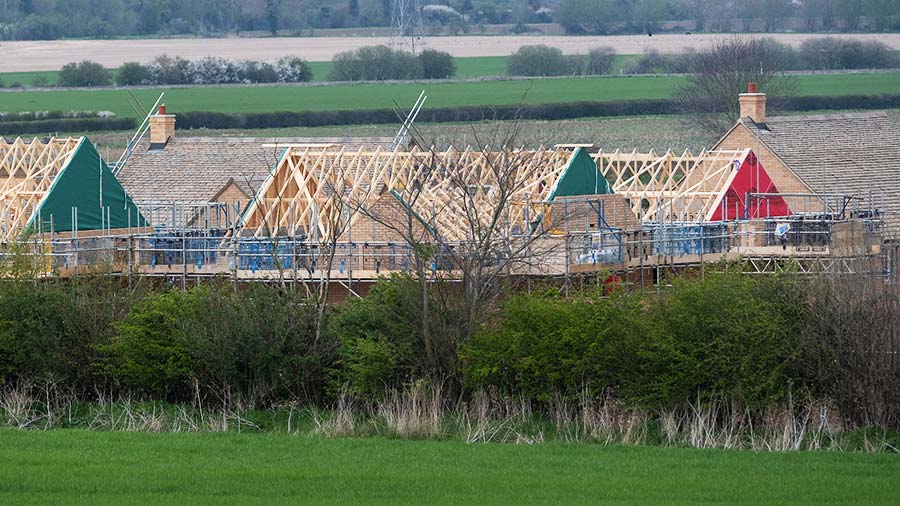Farm planning costs soar due to nutrient pollution rules
 © Tim Scrivener
© Tim Scrivener Farmers who are in catchments that must meet nutrient neutrality rules face an expensive and time-consuming process to get planning consent for new agricultural development applications.
Nutrient pollution, especially from increased levels of nitrogen and phosphates, has become a growing problem for freshwater habitats and estuaries, leading to excessive growth of algae, known as eutrophication.
As a result, nutrient neutrality rules have recently been extended from 32 local planning authorities to 74, affecting farmers seeking agricultural developments, as well as developers of residential housing.
See also: Phosphate issues cause long delays for farm planning applications
Alice Bonas, senior surveyor for GSC Grays, said: “A European Court of Justice ruling known as the Dutch Nitrogen case is causing severe delays and added costs for agricultural planning applications across the UK.
“Many councils are entering new territory scrutinising applications in light of the ruling, and the effect on applicants is being acutely felt.”
Nutrient neutrality explained
The Dutch Nitrogen case is related to the prevention of pollution and specifically its effect on nature.
The ruling means projects and plans must not have an adverse effect on nearby protected sites.
Natural England has issued guidance to local planning authorities where there are protected habitat sites that are in unfavourable condition due to excess nutrients, which states that developments can only go ahead if they will not cause additional pollution to these sites.
This is what is known as nutrient neutrality.
Miss Bonas said a recent application in Northumberland for a new pig rearing unit gave an insight into the requirements farmers were increasingly likely to need to follow.
The farmer who made the application was Richard Pearson, who runs a mixed farming business, with sheep and pig enterprises alongside a standard arable rotation.
The process for getting planning permission for Mr Pearson’s initial pig unit in 2018 was fairly straightforward, but 12 months on, when he applied for the construction of a second shed, this was not the case.
This was due to the farm being located within a 10km radius of 16 designated sites, principally the Northumberland coastal dunes system.
Additional scrutiny
“The Dutch Nitrogen case resulted in significant delays. The proximity of the farm to the protected sites triggered the additional scrutiny required under the guidance issued by Natural England,” said Miss Bonas.
“While a statutory consultee, Natural England would only engage with the application through its Discretionary Advice Service, which Mr Pearson had to pay for.
“The specialist services of external consultants, including ecologists, agricultural consultants and air quality experts, were also necessary to demonstrate no additional harm would be caused by the pig shed,” she said.
Conditional planning consent was eventually secured in July 2021, but it was an expensive, time-consuming and hugely disruptive process.
See also: How environmental planning system is tying up more farmland
The following steps were required as part of the planning process:
Ecologists
In addition to the usual site assessment, ecologists had to consider the effect of the deposition of ammonia on receptors placed at each of the 16 designated sites.
This was done by using the simple calculation of atmospheric impact limits (Scail).
Second Scail assessment
More refined calculations were required because of the sensitive condition of the dunes.
This involved a second Scail assessment by an agricultural consultant, who refined the inputs to better reflect the actual operation of the proposed unit.
This established that the emissions would be below the threshold normally accepted by Natural England and the Environment Agency, but as the dunes were already critically loaded, the precautionary nature of the assessment still pointed to an unacceptable impact.
Air quality assessment
A specialist consultant was then called in to model the effect of emissions in an even more refined way than the Scail assessment allows.
By modelling the feed regime, pig cycle and the effect of steps such as covering the muck store and mechanical ventilation, it was possible to demonstrate a negligible effect on the receptor sites.
However, these findings also required the input of an ecologist to interpret the effects on the protected habitats.
Strong commitment
Miss Bonas said it was clear that the sort of process experienced by Mr Pearson was set to remain for new development applications for the foreseeable future.
The case showed that applications could be progressed with hard work and strong commitment to the project – but farmers should be forewarned.
The original shed took seven months to go through the planning system, compared with 16 months for the second.
The technical reports that were required cost more than three times the amount that would normally be expected, with the professional time needed also doubling.
Mr Pearson said while he was pleased the shed had been given consent, it had been an incredibly frustrating and painful process.
He also pointed out that there were existing developments on farms closer to the dunes causing more harm than his ever will.
“Those uses are legally permitted, but the pain I have gone through will not solve the problem and a much fairer approach needs to be found by those in power.”
